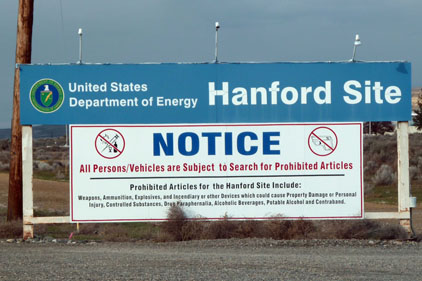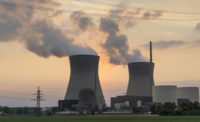Hanford nuke cleanup site workers sickened; exposure monitoring shows no problems

 A series of toxic chemical exposures at the Hanford Site is prompting stepped up safety measures at the vast nuclear cleanup site in southeastern Washington, according to documents obtained by KING 5 News.
A series of toxic chemical exposures at the Hanford Site is prompting stepped up safety measures at the vast nuclear cleanup site in southeastern Washington, according to documents obtained by KING 5 News.
Washington River Protection Solutions, the private company charged with managing tanks holding millions of gallons of nuclear sludge at Hanford, ordered workers to use respirators every time they work in the portions of the site where single-shell waste tanks are located. Prior to that change, workers could opt out of wearing respirators in many parts of the tank farms.
A series of incidents
A series of vapor incidents that began last March has sent more than 50 workers to the hospital or the on-site medical clinic. While some workers reported only minor physical effects, others required hospital care and continue to report symptoms such as difficulty breathing, shaking and memory loss.
The mandatory respirator order came after WRPS officials saw early drafts of an expert panel's review of the vapor incidents and safety procedures at Hanford. The review was paid for by WRPS and the Dept. of Energy and headed by the federal government's Savannah River National Laboratory.
Cold War leftovers
Government studies have found nearly 2,000 toxic chemicals inside the tanks -- the leftovers from the messy work of plutonium production during the Second World War and the Cold War. Caustic chemicals were used to melt uranium fuel rods from nuclear reactors at the site, then small amounts of plutonium were removed from the dissolved fuel.
Waste from the process was pumped into 177 tanks. Decades later, it remains deadly and will continue to be until the technology is developed to permanently dispose of it. The waste, hot from radioactive decay, vents toxic vapors at irregular intervals. While special filters keep radiation from escaping from the tanks, the toxic gases pass through unstopped into the atmosphere around the tank farms.
Not exposed...but having symptoms
In July the Department of Energy took reporters on a tour of the site to showcase safety precautions and to report that none of its own studies had detected chemical vapors this year. Energy officials did not rule out vapor exposure as a possible cause of the workers' conditions, but stressed that no air monitoring tests had picked up signs of chemical in the air at the site.
"Our workers are not exposed to vapors, but they are having symptoms," said Energy official Tom Fletcher. "The question is: 'Why?' ... This isn't something we are taking lightly."
Looking for a reprint of this article?
From high-res PDFs to custom plaques, order your copy today!






